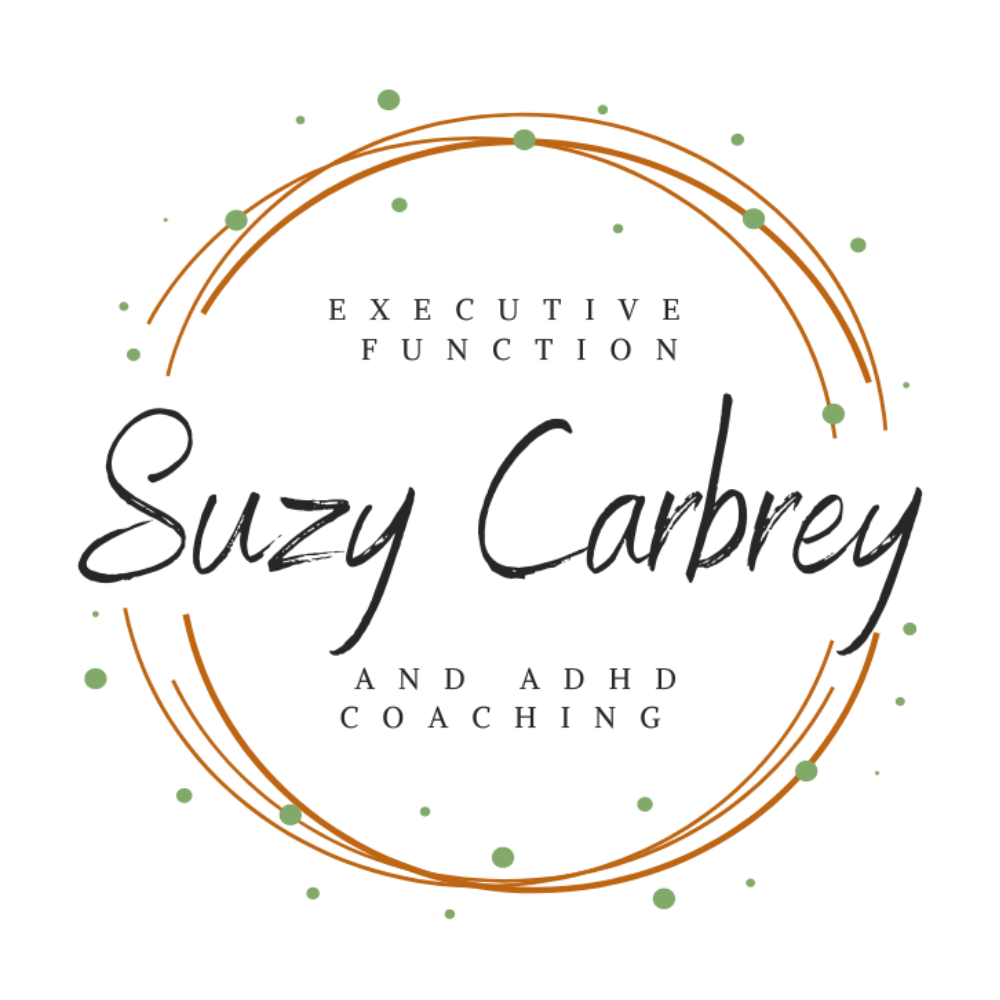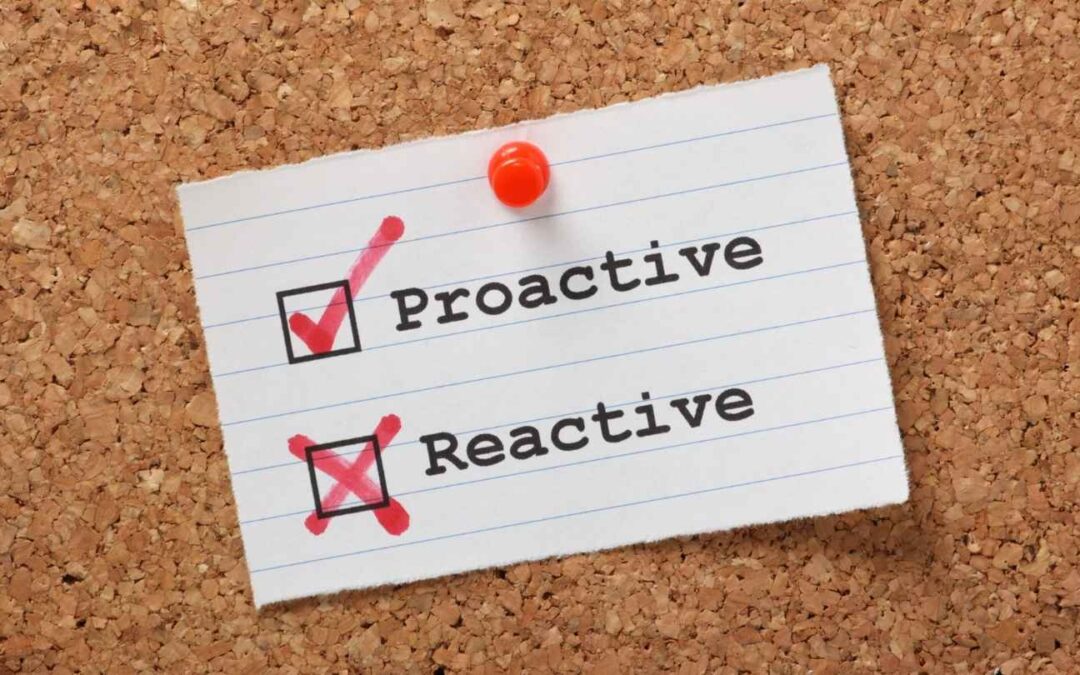It’s easy to get caught up in daily demands and constant notifications, leaving us to feel reactive rather than proactive. Many parents and professionals find themselves constantly putting out fires, addressing everyone else’s needs, and leaving little time for their own priorities. This reactive state might keep things afloat, but it doesn’t allow us to grow, reach our goals, or feel balanced.
Being proactive means focusing on tasks that move your personal goals forward, rather than constantly reacting to others’ needs. This shift helps you build a fulfilling life by prioritizing what truly matters. In this post, we’ll dive into strategies that support proactivity, including how to set boundaries, use self-talk for motivation, and practice mental flexibility. Let’s explore ways to reclaim your time, reduce stress, and intentionally take steps toward your goals.
Why Being Proactive is Essential for Long-Term Success & Well-being
Proactivity is the secret behind progress and peace of mind. When you’re proactive, you’re deciding what’s important to you and actively working toward it. You’re shaping your life rather than letting life happen to you. By taking the time to focus on proactive tasks, you build confidence and reduce stress by preventing last-minute rushes. And as you see progress on your personal goals, you gain a sense of accomplishment and control over your life.
In contrast, a reactive approach often leaves you feeling like you’re merely surviving. It’s driven by external demands—emails, urgent requests, minor crises—that feel like they’re constantly piling up. Reactive tasks take up time and mental energy, keeping you from the deep, meaningful work that helps you grow and find satisfaction.
So how can we move from reactive to proactive? Let’s start by identifying your priorities.
Setting the Stage: Identify Your Key Goals
If you want to build a proactive life, start by defining what matters most to you. Many of us spend our time pushing someone else’s goals forward instead of our own. Your priorities may include career advancement, a new skill, or personal projects that make your life richer and more meaningful. These goals deserve time on your calendar, just as much as daily responsibilities do.

When deciding which tasks to prioritize, ask yourself: “Is this task advancing my goals, or someone else’s?” This question can act as a compass. Setting personal goals and aligning your schedule to focus on them empowers you to make choices that are best for you.
Using Self-Talk to Motivate Proactivity
Self-talk can be a powerful tool to stay on track with proactive tasks. When you catch yourself delaying a task, try encouraging yourself with positive self-talk. Here are a few examples:
- “My future self will thank me.” Imagining the relief you’ll feel after a task is done can make starting easier.
- “This will make my life easier.” Remind yourself that by tackling the task now, you’re saving yourself from stress later.
- “Just do it now.” This simple phrase works as a quick mental nudge to start. By removing overthinking, you reduce the risk of procrastination.
Visualizing a positive outcome—like a smoothly executed project or a tidy home—can reinforce this self-talk and help you stay motivated.
Building Mental Flexibility for Proactive Focus
Mental flexibility is crucial when you’re trying to build proactive habits. Rigidity—clinging to specific ways of doing things or only wanting to start tasks under ideal conditions—can hinder you from starting at all. To cultivate mental flexibility, start by recognizing when you’re feeling resistant to change. This might happen when a task seems too hard, too boring, or just overwhelming.
When you feel this resistance, try shifting your perspective. Instead of thinking, “I don’t have time,” or “I can’t do this now,” consider reframing these thoughts. Say, “I’m capable of starting” or “I’ll do just one small part.” Breaking tasks down into smaller steps can make them feel manageable and help you overcome the initial resistance.
Another technique to manage rigidity is grounding exercises, like deep breathing or brief mindfulness moments. These can calm the mind, reduce anxiety, and make it easier to start.

Carving Out Dedicated Time for Proactive Tasks
One of the best ways to make progress on proactive tasks is to schedule dedicated time for them each day. Consider creating a “proactive block”—an hour or two where you focus exclusively on tasks that move your personal goals forward. This is your uninterrupted time to work on projects without distractions.
Once you set this time aside, protect it. Treat it like an important meeting that you wouldn’t miss. Turn off notifications, set an auto-reply on your email if needed, and let those around you know you’re unavailable. By creating this boundary, you’re showing yourself and others that your proactive work is important and deserves respect.
Setting up a focused environment also makes a difference. A clutter-free space, a specific playlist, or even a cozy setup can help you concentrate and make the most of your proactive time.
Reducing Distractions for Better Focus
Even with dedicated time set aside, distractions can pull you out of your proactive zone. Managing these distractions can help you stay focused and maximize productivity. Start by identifying the most common distractions in your environment. For many, these include digital notifications, interruptions from others, or even physical clutter in your workspace.
To combat digital distractions, consider turning off notifications on your devices or setting your phone on “Do Not Disturb” during your focused work periods. If you find certain apps or websites too tempting, try using productivity tools that block them temporarily. For in-person interruptions, communicate your boundaries to those around you, letting them know when you’ll be available and when you need focus time.
Finally, creating a clean, organized workspace can make a big difference in helping your mind stay centered. Decluttering your area or even setting up visual cues for focus (like a “Do Not Disturb” sign) can support your proactive mindset. By managing distractions, you’ll create an environment that fosters deeper concentration, allowing you to make steady progress on your goals.
Simplifying Your Task List
We all have long to-do lists that can feel overwhelming, making it difficult to know where to start. Choose two essential tasks each day that will push your goals forward, and focus on them deeply. Prioritize these two tasks above everything else, aiming to complete them during your proactive block.
By narrowing down your tasks to just two key items, you’ll avoid scattering your energy and gain a clearer sense of accomplishment. This approach also gives you momentum for the next day, making it easier to build on each day’s progress.

Tips for Transitioning Between Roles
If you wear multiple hats—such as a professional, parent, and partner—you might find it difficult to stay fully present in each role. To manage these transitions effectively, define which “mode” you’re in. Ask yourself, “Am I in work mode, family mode, or personal mode?” Being intentional helps you engage more fully, rather than feeling divided.
Consider adding a small ritual to help with these transitions. For example, after your workday, take a short walk or spend a few minutes journaling to shift into family mode. These rituals create a mental buffer, allowing you to let go of one role and focus on the next.
Self-Care and Reflecting on Proactive Progress
Maintaining a proactive lifestyle requires energy and resilience, so it’s important to manage energy drains. Identify tasks that drain your mental or physical energy, and consider outsourcing them if possible. For example, hiring a cleaner or arranging a meal prep service might give you the time and energy to focus on your personal goals.
Reflection also plays an important role in maintaining progress. At the end of each week, review what you’ve accomplished, and recognize how far you’ve come with proactive tasks. Small check-ins like these give you a sense of momentum and help you make adjustments for the upcoming week based on what worked well.
Conclusion: Embracing Proactivity for a More Balanced, Fulfilled Life
Learning to take charge of proactive tasks is a powerful step toward living with intention and balance. While it’s easy to stay stuck in a reactive cycle—constantly responding to demands and never getting to your own goals—this approach often leaves us feeling unfulfilled and burnt out. Proactivity, on the other hand, puts you in control. By setting boundaries, using self-motivating self-talk, practicing mental flexibility, and intentionally reducing distractions, you create the space needed to focus on what truly matters to you.
Establishing dedicated time for your priorities and simplifying your task list empowers you to stay focused and experience progress without overwhelming yourself. Meanwhile, balancing roles and nurturing your energy ensures that your proactive habits can be sustained. Proactivity isn’t about doing everything but about doing what aligns with your values and long-term goals.

As you make these changes, remember to celebrate your progress. Reflect on each small step forward, recognizing that every proactive choice brings you closer to a more balanced, meaningful life. Embrace this journey of proactive living—because you deserve a life where your goals and well-being take center stage.
Learn more with Online Coaching for Executive Functioning / ADHD
Ready to gain control and enhance your executive functioning? As an experienced and compassionate coach, I specialize in providing support for executive functioning and ADHD. To embark on your journey, please reach out to me at 708-264-2899 or email hello@suzycarbrey.com to schedule a FREE 20-minute discovery call consultation.
With a background as a speech-language pathologist, I have a strong foundation in executive functioning coaching. My graduate degree program in SLP placed a significant emphasis on cognition, including executive functions, and I have years of experience in medical rehabilitation, providing cognitive-communication therapy. Additionally, I have completed an ADHD Services Provider certification program, I am Solutions-Focused Brief Therapy Diamond Level 1 certified and I am trained in the Seeing My Time® executive functioning curriculum.
Experience the convenience and effectiveness of online coaching, backed by studies that demonstrate equal results to in-person services. Parents, professionals, and emerging adults love the convenience and privacy of receiving coaching from their own homes.
Whether you reside in Chicago, Milwaukee, Indianapolis, Kansas City, or anywhere else around the globe, I am here to assist you. Schedule your discovery call consultation today, and I eagerly anticipate the opportunity to work with you!
Please note that although I am a certified speech-language pathologist, all services Suzy Carbrey LLC provides are strictly coaching and do not involve clinical evaluation or treatment services. If you require a formal speech therapy evaluation and treatment, please inform me, and I can provide appropriate recommendations.

